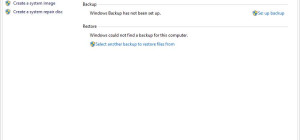 Presently the vast majority of you have finally realized that blockchain isn’t only a buzz, how about we get significantly more comfortable with the actual enterprise platforms being developed to unleash the true potential of this ledger technology in different sectors. Gartner analysts David Furlonger and Ray Valdes have claimed in their recent Trend Insight Report that blockchain is evolving from a digital currency infrastructure into a platform for digital transformation.
Presently the vast majority of you have finally realized that blockchain isn’t only a buzz, how about we get significantly more comfortable with the actual enterprise platforms being developed to unleash the true potential of this ledger technology in different sectors. Gartner analysts David Furlonger and Ray Valdes have claimed in their recent Trend Insight Report that blockchain is evolving from a digital currency infrastructure into a platform for digital transformation.
What Does a Blockchain Consist of?
The blockchain is a decentralized database, which can be enhanced and updated and comprises of nodes consecutively connected in a chain. Each node contains data about the past node. The information of blocks is duplicated and put away on various PCs without being bound to one particular server, which makes the substitution of records incomprehensible.
Significant characteristics of the blockchain technology:
- Decentralization
- Transparency
- No limits on the volume of data stored
- Reliability
The Most Promising Blockchain Platforms
1. Ethereum
It is an open-source Blockchain platform that runs smart contracts and provides programming tools for their creation. Having been proposed by Vitalik Buterin in 2013, the platform improves both the advancement of cutting edge decentralized applications (DApps) and online contractual understandings.
Ethereum permits outlining and issuing of cryptographic forms of money and tradeable advanced tokens. Likewise, you can make your very own DAO (democratic autonomous organization), e.g., a virtual association where different issues are solved by member voting.
The platform offers numerous helpful highlights, including Turing-complete languages, command line tools (worked in Go, C++, Python, Java, and so forth.), and Ethereum wallet, the last empowering developers to hold and ensure crypto-assets and streamlining smart contract development.
2. Hyperledger Fabric
“As new innovation comes into the picture, there is a call for standards. Members need to center around time and effort and investment to develop solutions versus agonizing over the technology. This is the method of reasoning for open models… we are pulling together the most energizing portfolio with a multi-lateral developer and vendor community. It’s like the advantages that Linux conveyed to the universe of operating systems.”
– Brian Behlendorf, Executive Director, Hyperledger
Launched in 2016, Hyperledger, facilitated by Linux Foundation, is an open-source collaborative effort to propel cross-industry blockchain technologies. One of its key objectives is to make endeavor review circulated enterprise-grade distributed ledger frameworks and codebases. Hyperledger flaunts 185+ working ventures crosswise over finance, banking, inventory system, manufacturing and technology.
Hyperledger Fabric is one of the 8 progressing ventures that was at first contributed by IBM and Digital Asset. It is an appealing blockchain framework for enterprise solutions, given its modular architecture, as it permits plug-and-play parts around consensus and membership services. It as of now has released Hyperledger Fabric 1.0 that professes to be production-ready for enterprises.
3. Multichain
Set up upon the bitcoin’s blockchain, MultiChain is an open-source blockchain used to make permissioned blockchains inside or in the midst of various enterprises. The significant prominence of this blockchain platform is derived by its motive to make much secure and private network in its enhanced versions. Following are it’s usp’s
⦁ Private permissioned network
⦁ Free and open source pricing
⦁ Actively updated in Github
⦁ Quick deployment
⦁ Supported Languages: Python, C#, C++, JavaScript
4. Openchain
As the name is demonstrative enough, OpenChain is a widely know open source blockchain framework that is broadly utilized in associations that intend to deal with their computerized resources. The frameworkwas made known and advanced by Coinprism. The platform has redone permissions on different levels which make it much favorable. Following are it’s usp’s
⦁ Numerous degrees of authority
⦁ Private Network
⦁ Supported language: JavaScript
5. Quorum
Quorum is the customized Enterprise version of Ethereum. The platform is also highly popular as the brainchild of J.P. Morga. Much the same as numerous others in the space of Quorum is public, open to use and motivates innovation and experimentation. It is a smart contract framework being used by coming of the age organizations.
Quorum USP’s
⦁ Suitable for high-speed applications
⦁ Innovative graphics interface- CakeShop
⦁ Majority voting consensus mechanism
6. BigChainDB
BigChainDB is an open-source distributed ledger system intended for putting away extensive data and empowering developers to deploy blockchain proof-of-concepts and applications. The database gives decentralized control, low latency, immutability, powerful query functionality, and a high speed of transaction processing.
The framework doesn’t have its very own currency however permits the issuing and exchange of any assets, tokens, and cryptographic forms of money. BigChainDB supports custom digital resources and sets up access consents at an exchange level. BigChainDB depends on Federation Consensus Model, an alliance of nodes with voting permissions. Supporting both open and private networks, BigChainDB has many usages across areas such as intellectual property, human resource, government, and land registry.
7. Corda
It is an open-source Blockchain framework and enables developers for building permissioned distributed ledger systems. The project was created by R3 consortium, combining the biggest banks and enabling management of legitimate agreements between parties.
Like other circulated records, R3 Corda gives safe information stockpiling and permanent information record. Right now, it’s presumably the only distributed ledger framework that has a pluggable consensus.







